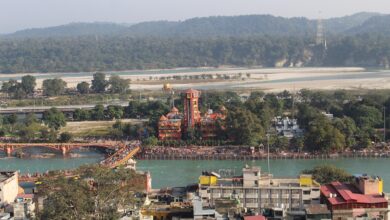What Risks Come With Delaying Water Damage Restoration?

When water invades your home—whether due to flooding, a burst pipe, or a roof leak—every second matters. Water damage can silently destroy the integrity of your home if left untreated. In coastal areas like Kemah, TX, where storms and humidity are frequent, acting quickly is even more crucial. Delaying water damage restoration doesn’t just increase the cost of repairs—it also threatens your health, property value, and peace of mind. That’s why homeowners trust Bulldog Restoration & Cleaning LLC for prompt, professional water restoration services.
Why Acting Fast Matters After Water Damage?
The longer water sits in your home, the worse the damage becomes. Within hours, water seeps deep into walls, flooring, and personal belongings. Within days, it can spark mold growth and structural decay. What might have been a manageable cleanup could evolve into a full-blown reconstruction project.
Prompt residential water damage restoration involves not only removing visible water but also detecting hidden moisture and addressing it properly. It’s not just about cleaning—it’s about protecting your home from long-term harm.
Risk #1: Mold and Mildew Growth
One of the most common—and dangerous—side effects of water damage is mold growth. Mold can begin developing within 24 to 48 hours in a damp environment. Once it spreads, it becomes difficult and expensive to remove. It also poses serious health risks, especially for those with respiratory conditions or allergies.
Timely water extraction and dehumidification help stop mold before it starts. Professional restoration companies in Kemah, TX use moisture meters and thermal imaging tools to identify moisture hidden inside walls and under floors.
Risk #2: Structural Damage to Your Home
Water weakens the materials that make up your home. Drywall absorbs water quickly, insulation becomes saturated, and wooden beams begin to warp or rot. Over time, these materials lose their strength, leading to sagging ceilings, buckling floors, and potentially dangerous structural instability.
Only professional water restoration can thoroughly dry and restore these materials or determine when replacement is necessary. Delaying service increases the chances you’ll need costly demolition and reconstruction.
Risk #3: Electrical Hazards
Standing water near electrical outlets, appliances, or wiring is a major hazard. Water can damage your electrical systems, increasing the risk of fire or shock. If water reaches your electrical panel, it can shut down major functions in your home or even render it uninhabitable until repaired.
Professional restoration technicians know how to safely work around electrical systems and will coordinate with licensed electricians when necessary.
Risk #4: Contaminated Water Exposure
Not all water is clean. Water from floods, backed-up sewers, or broken appliances often contains bacteria, chemicals, and other dangerous substances. Waiting to clean it up increases exposure to health hazards for both residents and pets.
A water restoration company uses industrial disinfectants and protective gear to safely remove and sanitize affected areas. They’ll also dispose of contaminated materials according to safety guidelines.
Risk #5: Permanent Damage to Belongings
Carpets, furniture, books, photographs, and electronics—these are often the first things affected by water. Waiting too long can mean permanent loss. Prompt residential water removal services increase the chances of salvaging your possessions through specialized drying techniques.
Risk #6: Increased Insurance Complications
Homeowners insurance typically covers sudden and accidental water damage, but it expects you to act fast. Failing to address the issue quickly might be seen as negligence, which could jeopardize your claim.
Professional water damage restoration providers in Kemah, TX often assist with documentation, helping you get the reimbursement you deserve.
The Professional Restoration Process
Here’s what happens when you call a professional for water removal and damage restoration:
- Assessment and Inspection – Technicians inspect the property and determine the water category (clean, gray, or black water) and the extent of damage.
- Water Removal – High-powered pumps and vacuums are used for fast water extraction, even in hidden areas.
- Drying and Dehumidification – Air movers and dehumidifiers ensure all moisture is eliminated to prevent future problems.
- Cleaning and Sanitizing – Surfaces and materials are cleaned, sanitized, and deodorized.
- Restoration and Repair – Damaged materials are repaired or replaced to return your home to its original condition.
Why Local Restoration Experts Matter
With its proximity to the coast, Kemah homes face unique threats from flooding, heavy rain, and humidity. Local restoration experts understand the regional risks and have the tools and experience to handle them properly. Whether you’re dealing with storm damage or indoor flooding, quick local response makes a significant difference.
Conclusion
Delaying water damage restoration may seem harmless at first, but the consequences grow more serious with each passing hour. From mold and health risks to permanent structural damage, water can silently erode the comfort, safety, and value of your home.
If you’re in Kemah, TX, don’t wait. Contact the team at Bulldog Restoration & Cleaning LLC for fast, expert residential water removal, drying, and full restoration services. Acting quickly helps save your property—and your peace of mind.
FAQs
Q1: How quickly should i respond to water damage?
Ideally, within the first 24–48 hours to prevent mold and minimize structural damage.
Q2: Is water removal covered by insurance?
yes, most policies cover sudden and accidental water damage, but you must act fast and document the process.
Q3: Can i handle minor water damage myself?
for small spills, yes—but hidden moisture may go undetected. professional services are safer for large or recurring problems.
Q4: How long does water restoration take?
it depends on the damage extent, but typically 3 to 7 days for drying and initial cleanup.Q5: What equipment do professionals use?
they use industrial pumps, wet vacuums, dehumidifiers, air movers, moisture meters, and disinfectants.


